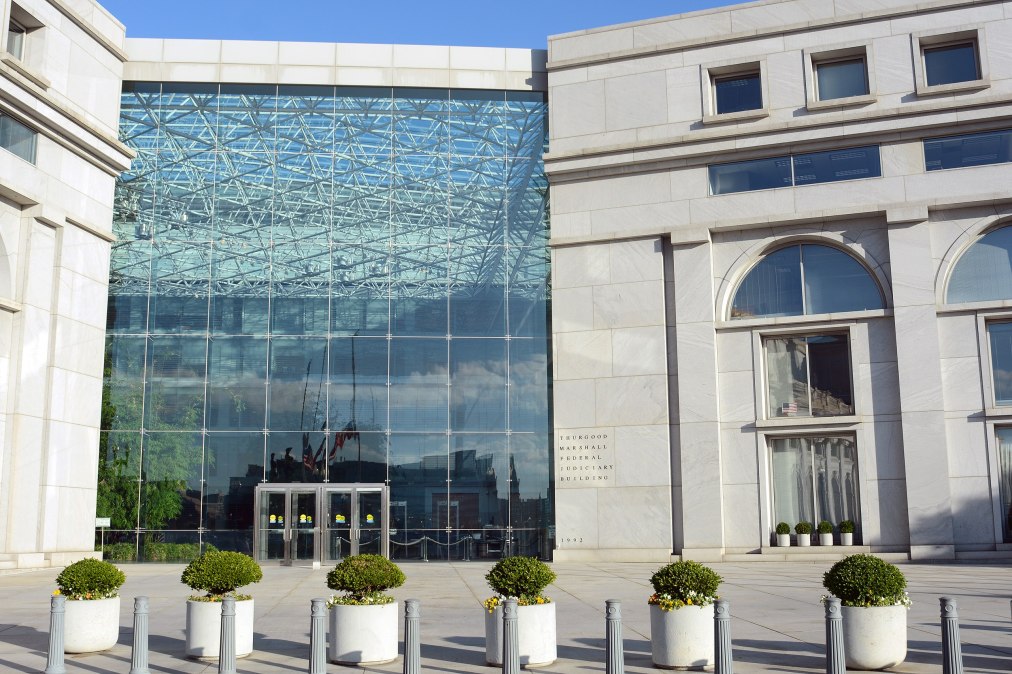Interim AI guidance for US courts aims for experimentation with guardrails

The federal judiciary has distributed interim guidance on artificial intelligence that allows for use of the technology, while also addressing procurement and security of the tools, according to a letter to Senate Judiciary Committee leadership that was made public Thursday.
In correspondence to Sen. Chuck Grassley, R-Iowa, Administrative Office of the U.S. Courts Director Judge Robert J. Conrad said an AI task force formed earlier this year developed the guidance and it was distributed to federal courts across the country July 31.
Although the policy is a temporary measure while the courts work on more permanent guidance, courts can explore the budding technology in the meantime.
“The guidance aims to allow for the use of and experimentation with AI tools while preserving the integrity and independence of the federal courts and the judicial process,” Conrad said.
Disclosure of the guidance came as part of a response to Grassley’s inquiry about the use of AI in error-ridden orders from two federal judges. In addition to letters from the two judges admitting to clerks’ use of generative AI tools and assurances that they’d implemented measures to prevent future issues, Conrad provided detail on the broader efforts to address the technology within the third branch and the balance between use and risk management.
“AI presents a host of opportunities and potential benefits for the judicial branch, as well as concerns around maintaining high ethical standards, preserving the integrity of judicial opinions, safeguarding sensitive Judiciary data, and ensuring the security of the Judiciary’s IT systems.”
A spokesperson for the judiciary declined to share a copy of the guidance with FedScoop. Conrad, however, provided a description of its scope to Grassley.
Per the letter, the guidance is intended to be applied across the federal judiciary — to judges, staff, and other personnel. It includes suggestions for AI tool use, procurement, and security, as well as recommendations for specific areas like “confidentiality and security of Judiciary data” and “AI education,” Conrad said.
The guidance also contains warnings for particular uses, such as cautioning against the delegation of “core judicial functions to AI, including decision-making or case adjudication” and recommending “that users exercise extreme caution especially if using AI to aid in addressing novel legal questions.”
Independent verification of outputs is recommended, and judges, as well as other users, are reminded that they “are accountable for all work performed with the assistance of AI,” Conrad said.
Some of the recommendations leave room for discretion, such as a recommendation to consider whether AI use should be disclosed. Individual courts — which generally have a decent amount of autonomy in their practices — are also encouraged “to consider defining the tasks for which locally approved AI tools may be used.”
As the popularity of generative AI tools increased in recent years, so too, has interest in the federal government. The White House and agencies across the executive branch have launched their own policies for using the technology and mitigating potential harms, including deploying approved or customized tools on their own networks for employees to use.
While the judiciary is slightly further behind in the process, it has been showing interest in use of the technology.
In May, the judiciary’s AI pilot lead, Paul Drutz-Hannahs, told FedScoop that the administrative office was in the process of understanding courts’ needs and how AI could help. Drutz-Hannahs also emphasized that the federated nature of the federal courts system was a strength in that each court can test things out that others may choose to follow.
Part of the judiciary’s newly disclosed plans appear to address just that.
In his letter, Conrad said the judiciary’s AI task force is considering an “online AI information sharing site” as a way for those within the courts to share details about uses, policies, guidance, and local rules on the technology amongst each other.
“Such a site might be useful to provide courts with a forum to share their thoughtful uses of AI and encourage court units to discuss safe and responsible ways to use AI in court administration and operations,” Conrad said.






